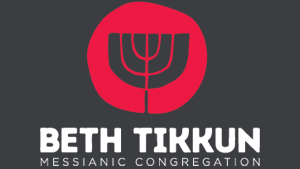Haf. Tetzaveh (Ezekiel 43:10-27)
Join Beth Tikkun as we continue our study of the Haftarah portions for the 2013-14 Torah cycle. In this study we discuss the “Third Temple” described by Ezekiel. We look at Ezekiel’s seemingly odd use of terms and focus especially on the altar and how tzitziot on the four corners of the tallit (prayer shawl) correspond to the horns on the four corners of the altar.
Podcast: Play in new window | Download
Subscribe: Google Podcasts | Stitcher | TuneIn | RSS



5 Comments
by Charlotte Gunther
On February 13, 2014
i needed to listen again! and i appreciate the way you help us make spiritual truth out of the pictures!
I have wondered how the Mount Sinai & Mount Zion of Hebrews relates to the things you said about the four-cornered altar. Can you explain?
Might there be several connections between Ps 118 & Ez 43, 44:
Ez 44:3 & Ps 118:19 as well as Ez 43:15 & Ps 118:27
by L. Grant Luton
On February 13, 2014
Yes, I think the reference to Zion in Hebrews 12 ties in beautifully. I guess the bottom line is always this, to draw near to God we must give up ourselves. After all, this is what the word for burnt offering in Hebrew (korban) means — “to draw near”. And the way we do so is by giving up our ways and embracing God’s ways through loving obedience to His commandments. This is the meaning of the altar as well as the tzitziot on the four corners of the tallit. Isn’t this our “reasonable service” since Messiah gave up Himself out of love for us?
by Charlotte Gunther
On February 14, 2014
guess my question wasn’t clear. i’m really seeking an explanation about how Mt Sinai and Mt Zion are described in Hebrews 12. When you described Ezekiel’s Temple & compared the altar to Mt Sinai i thought of how Hebrews contrasts Mt Sinai as fearful and unbearable, while Mt Zion is beautiful and festive, and it is the New city of the Living God. it has always seemed to give credence to the idea that the OT Torah is done away. But that can’t be true … so what does it mean?
Mt Sinai as seen in Hebrews seems not to be presented as an altar so much as the fearful judgment of God while Mt Zion is pure grace — as we would understand it churchily.
by L. Grant Luton
On February 16, 2014
Charlotte, Thank you for the clarification. I think I now understand your question. The answer lies in the fact that the problem was not with Mt. Sinai, but with the people. The people were flawed and not the mountain. In Hebrews 12:21 it states “And so terrible was the sight, that Moses said, ‘I am full of fear and trembling.'” But when we read the full quote in Deut. 9:19 we find this, “For I was afraid of the anger and hot displeasure that Adonai bore against you, so that he was ready to destroy you. But Adonai listened to me that time also.” This context provides the insight that it was due to the peoples’ sinfulness that the Sinai experience was so terrifying. Moses was not fearful for his own sake, but for the sake of his sinning brothers and sisters.
As we continue in the Hebrews passage (12:22-24) we see that the heavenly Mount Zion is not so terrifying. What has changed? There are at least four hints as to how WE have been changed. Just as Moses’ relationship to God was such that he could comfortably and fearlessly stand in the Almighty’s presence, we too shall someday be changed into little “Moseses” through the transforming power of our Messiah Yeshua.
by Charlotte Gunther
On February 16, 2014
yes, i see it better now. thank you.